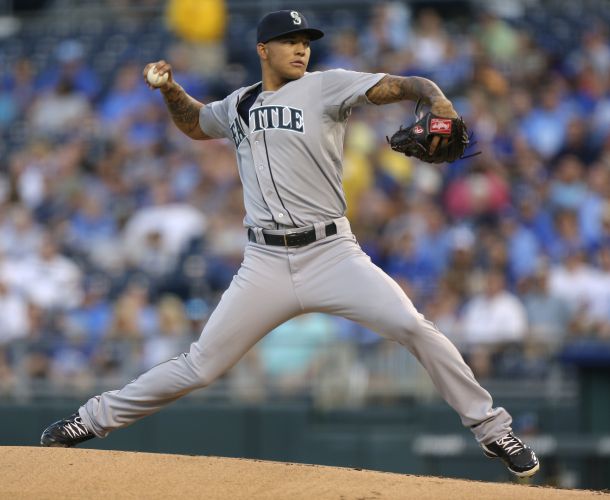Every spring, we hear about some player just tearing it up in Spring Training, and many fantasy owners start to buy into what the player is doing. We could discuss why fantasy owners should, for the most part, ignore Spring Training stats, but this year, one player who has significant potential is making his name heard. Taijuan Walker of the Seattle Mariners has been pitching exceptionally well thus far in spring, and it is about that time that owners need to make the choice of believe or not believe.
As stated, it really is in owners' best interest to temper expectations when looking at Spring Training stats lest they fall into the same trap owners did with Chris Sheldon and Jake Fox a few years back. So what makes Walker different, and why should owners pay attention? So far this spring, he has pitched eighteen innings without giving up an earned run while maintaining a WHIP of 0.56. He is also sporting nineteen strikeouts and four walks in those eighteen innings; that is definitely worth a look for owners. More importantly, his velocity has not dropped due to the injuries that hampered him all of 2014, and that is something owners have been keeping an eye on.
The thing owners have to ask about any players doing this well in spring is how likely this is going to continue or what the chances are of what the player is doing being sustainable. Looking at Walker’s Major League and Minor League numbers gives owners an idea of what we could expect moving forward.
In the Major Leagues, Walker has not even reached one hundred innings yet; he has pitched seventy-five innings with eight starts and eleven games pitched overall, so this would constitute as a small sample size, meaning he has not pitched enough innings or games that his numbers can be better or worse than he should be. In Walker's case, he has a K/9 of 7.81 in those eleven games with a BB/9 of 3.74.Both are solid for him, though owners would like a little more in the strikeout department. Another good sign of potential for potential value is Walker's career FIP at 3.28; that puts him at about twenty-two percent lower than the average of baseball.
We know the Major League numbers so far, but that is only half the puzzle. We now look at the Minor League numbers to see if Walker’s numbers in the Majors are a product of small sample size. To his credit, Walker has a BB/9 of 3.05 in the Minors, and that does support the low walk totals in the Majors. Hs 11.00 K/9 means that his lower strikeout rate could possibly rise to be closer to 9.00 or even 10 K/9. Walker has also had a solid career FIP in the Minors, averaging about a 2.90, which is very solid for the Minors. Looking at his FIP is a far better way to gauge his future success, so looking past ERA is fine. The fact that FIP is just a better stat in general has something to do with it too.
So now we are back to that question we started with. We can now look at the question with a little more data to go with the eighteen innings of Spring Training. When it comes to buying or selling on Walker’s spring numbers, it looks to be a sell but only to a point. The numbers he has put up to this point (through March 27) have actually been really good, and considering he was the Mariners' top prospect in 2012 and 2014 should not shock anyone. While this spring does bump him up the rankings, he is still a #4 or #5 five fantasy starter, but the probability of a big year may have just gone way up. Owners should probably be cautious and make sure that they do not let the spring numbers mean too much.










































